Last week I flew to Philadelphia to present Fat Pencil Studio’s work in court. The story in this case was all-too-familiar: a city bus takes a left turn and collides with a person walking in the crosswalk. The driver never saw him, but a security camera did.
We worked on a similar case two years ago, and were able to apply the same methods this time around. Using still frames captured from two different security cameras that saw the crash, we accurately placed the bus and pedestrian in a digital 3d model, and then put a virtual camera in the bus cockpit to understand what the driver could have seen in the moments leading up to the collision.
After completing our work, it was clear that the left side mirror was a contributing factor to the crash. It is very large and mounted right at eye height, creating a blind spot that, together with the A-pillar, obscured about 20 feet of the pedestrian’s path on the sidewalk and crosswalk.
Bus drivers are trained to “rock and roll” in the cockpit to help “see around” the mirror and A-pillar. But it’s not easy to do, particularly when there are other safety issues that demand attention. In this case, a group of three people were walking on the sidewalk to the left of the bus and preparing to enter the street.
To illustrate the size of the blind spot, we traced out a sight line from the bus driver’s eyes to the edges of the mirror, thus creating a “cone of invisibility.” Running through the sequence with the cone turned on allows a viewer to better understand how the pedestrian stays inside the blind spot, and also how visibility could be improved by simply lowering the mirror.
The role of the blind spot in this case was obvious, and the jury agreed, awarding $5 million in damages to the plaintiff, with 75% responsibility assigned to the transit agency and 25% to the bus manufacturer. I was happy to have the opportunity to use my expertise in photogrammetry and 3d modeling to help visualize the scene.
However, the whole experience got me thinking about other less obvious “blind spots” that we create for ourselves while operating vehicles in city streets. Dashboard computers and mobile devices force us to multi-task. Parked vehicles or stopped traffic block the view of vulnerable roadway users. Wide roadways encourage speeding and tunnel vision.
There’s a movement afoot to correct these problems. It’s called Vision Zero. I’ll be writing more about this next year, but for now the basic thing to remember is this: Humans make mistakes. Rather than simply blaming the vehicle operator or the victim of a tragic crash, we need to take a hard look at our vehicles and our infrastructure to find improvements that can reduce, and eventually eliminate transportation fatalities. Think about what you would want for your own family and loved ones. Even one fatality is too many.
However, change doesn’t happen overnight, so in the meantime, be safe out there, and take a quick look over your right shoulder any time you step into a crosswalk!



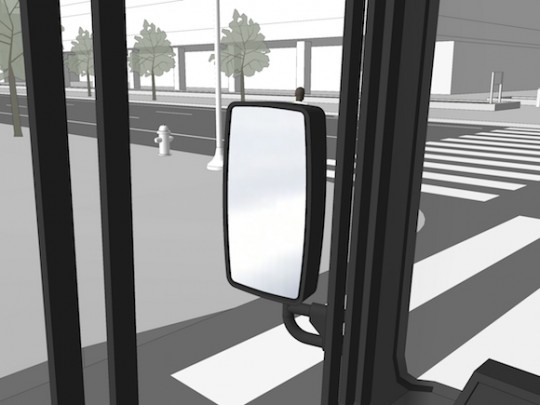
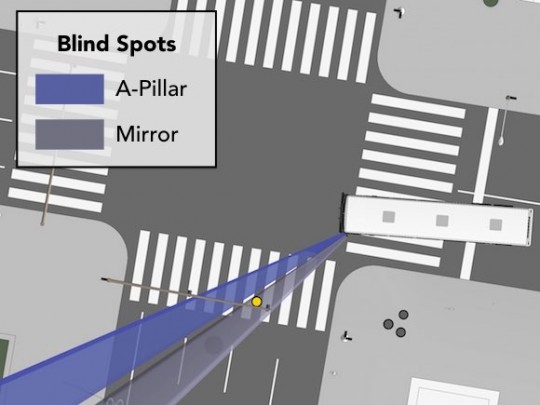
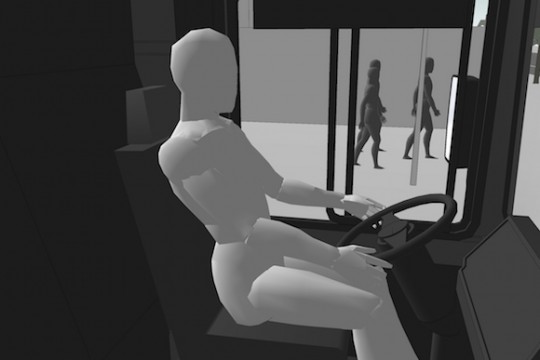
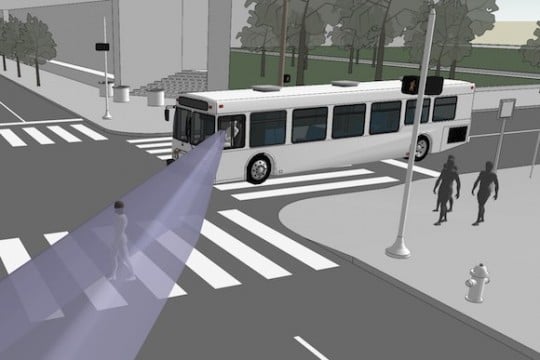
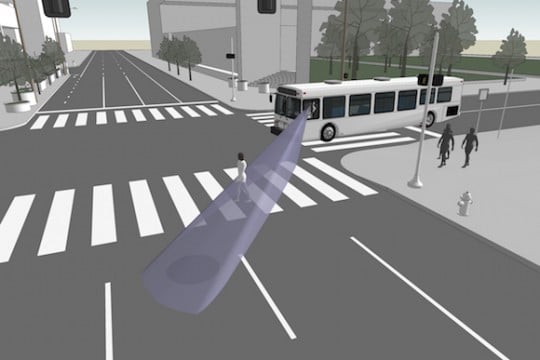

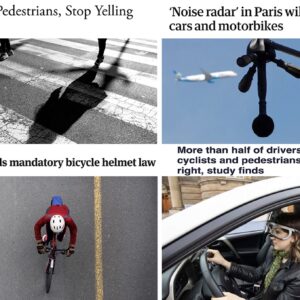
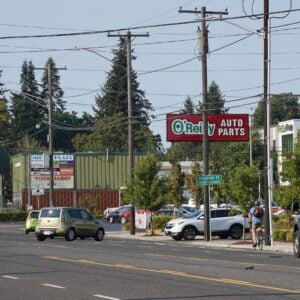
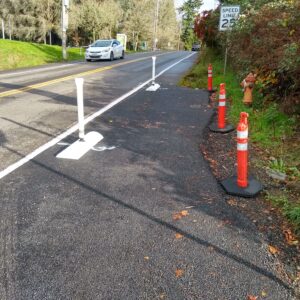
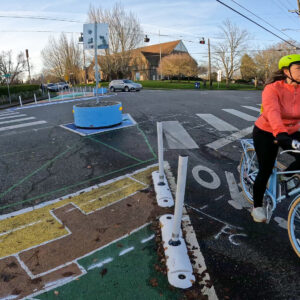
Thanks for reading.
BikePortland has served this community with independent community journalism since 2005. We rely on subscriptions from readers like you to survive. Your financial support is vital in keeping this valuable resource alive and well.
Please subscribe today to strengthen and expand our work.
I’m reminded of the A-pillar blink spot driving my gf’s Beetle, and it’s annoying… with the Auto Show talk it reminds me of 10 years ago when I went and saw the new Hummer H3… I hopped in the driver’s seat and couldn’t see a thing in front of me… huge A-pillar and mirror with a short window and tall hood makes for no visibility…
I feel spoiled when I get to walk/bike/scooter with nothing blocking my vision ahead…
Extremely vivid explanatory graphics! Wow. I always have a hard time visualizing these kinds of things. If only this much clarity could be brought to every crash involving vulnerable road users.
And at least part of the solution is so simple and low-tech: lower the mirror. I hope the multi-million-dollar lawsuit will get transit agencies to implement at least that one change.
PIty it takes multi-million-dollar lawsuits to jog the system out of its well-worn and deadly grooves.
“Dashboard computers and mobile devices force us to multi-task.”
I would say “entice”, rather than “force”. This is similar to the excuse-making I hear from many drivers claiming that a bicyclist riding in the lane “forces” a driver into oncoming traffic, risking a head-on collision. Instead, if anything, such a bicyclist may “force” a driver to slow down, just as all the cockpit gadgetry in cars should, if anything, “force” the driver to turn it off or ignore it.